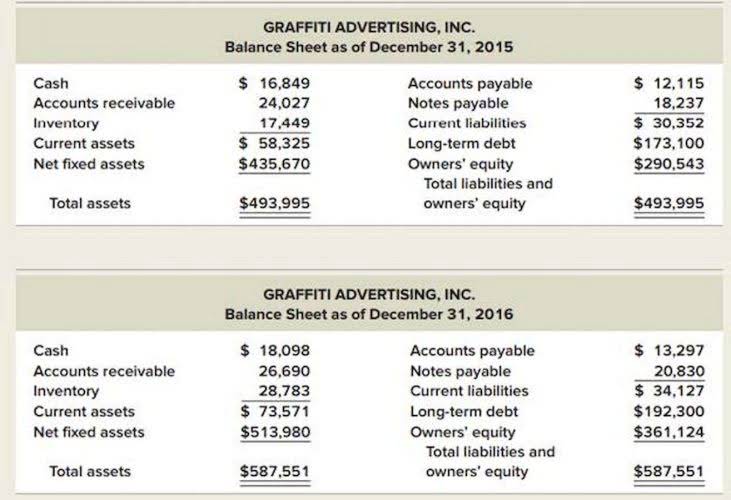
Companies must reconcile all accounts, including bank statements, payrolls, and intercompany transactions. Critical documents, such as income tax returns and sales tax reports, should be prepared with precision to avoid discrepancies during tax audits. Businesses often engage a tax professional to review all filings, ensuring compliance with relevant tax laws and regulations.
Is Investment in Equity Securities a Current Asset?
- In the dynamic world of business accounting, the role of software solutions cannot be overstated.
- Under adjusting journal entries, you will be adding any financial updates that were not noted earlier, for example, the late bill that arrived and other accounts receivable.
- Financial statements are then prepared, including the income statement, balance sheet, and cash flow statement.
- This can mean the rendering of the service and the payment of the bill end up occurring during 2 different accounting periods.
- After transferring the balance of revenue and expense accounts to the Income Summary account, you must subtract revenue from expenses and close the Income Summary to equity/retained earnings.
- Another important reason to close the books regularly is to comply with accounting principles and regulatory standards.
Look at Exhibit 24, a post-closing trial the closing process is sometimes referred to as closing the books. balance for MicroTrain Company as of 2010 December 31. The amounts in the post-closing trial balance are from the ledger after the closing entries have been posted. Your accounting practice works and improves the closing of books as a long-term and regular process.
Automated Credit Scoring

Closing entries are the journal entries made at the end of the accounting period to reset temporary accounts. These accounts include all revenue, expense, and dividend accounts, which accumulate balances only during the period. The purpose of summing the ledger accounts is to prepare the data for the trial balance, a critical step in the closing process. By knowing the ending balances of each account, you can ensure that all activity has been properly recorded and categorized. The first is the preliminary trial balance, generated after all journal entries for the period have been posted but before any adjusting entries are made.
- Accurate financial statements must reflect income and expenses in the correct periods to provide a true view of your business’s financial health.
- This process typically comes after the month ends, when the finance team reconciles accounts.
- Proper documentation also supports audit readiness and regulatory filings, reducing the risk of discrepancies or penalties.
- Year-end close procedures must include assessing all depreciable assets to ensure the correct depreciation expense is recorded.
- Such a task is time-consuming hence it is vital to choose automated bookkeeping or choose to bookkeeping outsourcing to an outsourcing service provider, to save time and enhance productivity.
Accounting for tax purposes
- You also learned that we prepare financial statements for certain accounting periods.
- Occasionally, revenue and expenses are transferred to an intermediate account called an income summary.
- Smaller businesses might close books monthly for better cash management, while larger enterprises may opt for quarterly or annual closings due to the volume of transactions.
- These platforms provide a comprehensive suite of tools to help businesses manage their finances, from invoicing and payroll to budgeting and reporting.
Regular closings, whether monthly, quarterly, or annually, provide accurate, up-to-date financial information that supports effective decision-making and regulatory compliance. This step resets temporary accounts to zero, preparing them to capture the activity of the next accounting period. Closing entries ensure that income and expenses are not carried forward incorrectly, which would distort future period results. Once all journal entries have been posted to the ledger, the next step is to sum the individual ledger accounts.
Closing of books is a critical accounting process that ensures financial records are accurate, complete, and in compliance with applicable standards. This process helps companies maintain transparency, track financial performance, and prepare for audits, taxes, or other regulatory reporting requirements. Closing the books is complex and can present several challenges, especially for small businesses without dedicated accounting teams.
- Our services have made our clients efficient and profitable in the long run and we offer the same to you.
- Once you receive it is important to thoroughly review its information while closing the books.
- This is where you record any financial updates, such as a late bill that arrived and other updated accounts receivable.
- Researchers in 2019 documented a significant correlation between the poor quality of accountants’ work and tight deadlines.
- Also closed at the end of the accounting period is the Dividends account containing the dividends declared by the board of directors to the stockholders.
• Closing the Income Summary account—transferring the balance of the Income Summary account to the Retained Earnings account. Back in October 2023, the UK government took a major step in the fight against financial c… Sign up for a free, no-obligation trial to start exploring our timesaving, valuable resources. Similarly, keeping track of log-in information for each program can make reconciling the books take longer than necessary. Set yourself up for the next period’s closing by anticipating any of the issues you came https://swdesignltd.com/uncategorized/what-is-an-ach-return-fee-and-why-do-they-happen-2/ across during this closing.


At the heart of this cycle lies the meticulous process of closing the books, a ritual that accountants and bookkeepers must undertake to maintain the integrity of a company’s financial records. This comprehensive guide delves into the intricacies of this essential practice, shedding light on its importance, the key steps involved, and the best strategies to streamline the entire closing process. To execute year-end accounting, one should reconcile all accounts, review financial statements for accuracy, and make necessary adjusting journal entries. It involves meticulous efforts to ensure that all financial activities are properly accounted for, resulting in the compilation of trustworthy financial statements. The process encompasses the finalization of balance sheets, the examination of profit and loss reports, and the preparation of comprehensive year-end financial statements.
An overview of the accounting principles and practices that small business owners need to be aware of when preparing financial statements and tax returns, whether done monthly or annually. Temporary accounts like revenues and expenses start at zero, while permanent accounts maintain their ending balances from the prior period. Business owners should provide timely access to records and answer any questions regarding Oil And Gas Accounting transactions or business activities. Accountants and bookkeepers can then use this information to prepare adjusting entries and finalize reports.

The total debit to income summary should match total expenses from the income statement. After reconciling accounts, the next step is to make any necessary accruals and adjustments through adjusting journal entries. These entries may include recording accruals for revenues and expenses, adjusting for depreciation, or correcting any errors identified during the reconciliation process. It involves comparing the balances in the general ledger with the corresponding balances in subsidiary ledgers or external sources, such as bank statements. This process helps identify and correct any discrepancies, ensuring the accuracy of the account reconciliation. When closing the books at the end of a fiscal year, two critical components are Inventory and Asset Management.
Adjusting journal entries, such as accruals or depreciation, can be entered easily and linked to the relevant accounts. This helps ensure that your financial reports reflect the true economic activity of your business, even if some expenses or revenues span multiple periods. In this example we will close Paul’s Guitar Shop, Inc.’s temporary accounts using the income summary account method from his financial statements in the previous example.

